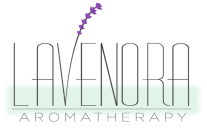What are Essential Oils?

Essential Oils are volatile aromatic oils that hold the essence or the life force of a particular plant. Depending on the oil, either the root, stem, leaves, flower, needle, bark, or fruit is used. The oil is derived either through expressing the oil from the rind of fruit (e.g. bergamot or grapefruit), steam distillation (traditional), or solvent-extraction (e.g. Jasmine is extracted with the use of hexane, di-methylene-choride, or acetone; highly concentrated). Absolutes are part of the latter method and are not considered an essential oil, e.g. Jasmine absolute.
Often an entire plant is needed in order to produce one drop of essential oil. These oils are highly concentrated and therefore should be used with caution such as any other herbal remedy. Essential oils range from their usage in a variety of ways, from deodorant or insect repellent, to antiseptic, anti-inflammatory, or anti-fungal properties. They may be stimulating (Rosemary), relaxing & calming (Lavender) or grounding (Frankincense).
Essential oils always have a common name, e.g. Lavender, as well as a Latin name which is written in italic. The genus (Lavandula) and the species (angustifolia). The latin name is important to know because one genus can have many different species and thus the therapeutic effects may differ.
Often an entire plant is needed in order to produce one drop of essential oil. These oils are highly concentrated and therefore should be used with caution such as any other herbal remedy. Essential oils range from their usage in a variety of ways, from deodorant or insect repellent, to antiseptic, anti-inflammatory, or anti-fungal properties. They may be stimulating (Rosemary), relaxing & calming (Lavender) or grounding (Frankincense).
Essential oils always have a common name, e.g. Lavender, as well as a Latin name which is written in italic. The genus (Lavandula) and the species (angustifolia). The latin name is important to know because one genus can have many different species and thus the therapeutic effects may differ.
A word of Caution

Not all Essential Oils are 100% pure! In the United States, Essential Oils need only contain 5% of the plants essence in order to be labeled "pure".
Therefore, always ask the company/supplier you are purchasing from for a Gas Chromatography/Mass Spectrometry (GC/MS) Report. This report is a breakdown of the chemical components and will show whether an essential oil is adulterated (diluted) or not.
I am using Essential Oils from two different companies:
*AFNOR = Association French Normalization Organization Regulation
*ISO = International Standards Organization
Therefore, always ask the company/supplier you are purchasing from for a Gas Chromatography/Mass Spectrometry (GC/MS) Report. This report is a breakdown of the chemical components and will show whether an essential oil is adulterated (diluted) or not.
I am using Essential Oils from two different companies:
- Young Living adheres to European Standards of testing and their essential oils are according to AFNOR/ISO* standards, which are more stringent and differentiate true top quality essential oils from those that may have been adulterated.
- Aromatics International also has high quality and pure essential oils from distillers all over the world. Each essential oil comes with a GC/MS report.
*AFNOR = Association French Normalization Organization Regulation
*ISO = International Standards Organization

